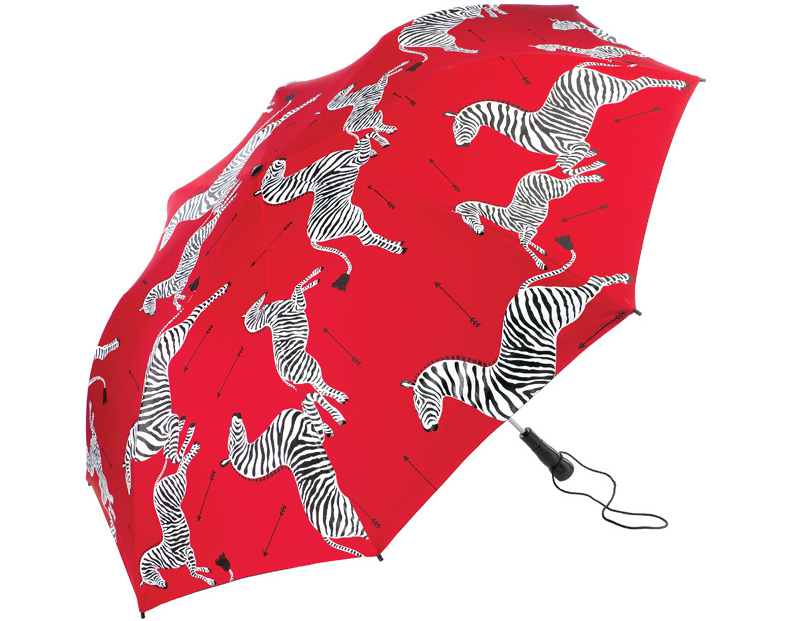
Nathan Pyle has recently written an illustrated handbook for living in—or, perhaps even more crucially, visiting—New York. NYC (Basic Tips and Etiquette) contains such valuable tips as
- Beware of the empty train car, it’s empty for a reason.
- Bring cash to group dining events.
- 12% chance you have spotted a celebrity. 88% chance you have spotted someone who vaguely resembles a celebrity. 100% chance you are awkwardly staring at someone while you argue about it.
These will, I think we agree, apply to any good-sized city.
Yesterday, two of Pyle’s tips were very much on my mind. The weather had, abruptly, turned brutal: cold, with high winds and lashing rain. This weather! This weather! This weather! everyone chanted. Pyle is absolutely right in his assertion that “one $20 umbrella will outlast four $5 umbrellas.” I went for my hardiest number, which is, incidentally, patterned with cheerful zebras on a red ground.
The problem is, good, sturdy umbrellas do not give way easily on the street—they dominate all in their path. And I could not master mine. The same characteristics that allowed my Zebra to stand tough in gusts that blew out Beta umbrellas were those that made him a bully. So strong was he that I was helplessly pulled in his wake like a reject nanny out of Mary Poppins. I was protected, yes, but only from the elements. Everyone hated me, either out of jealousy or because under the force of my huge, heavy umbrella I was weaving all over the street.
Things did not improve when I reached the narrower streets of Chinatown, where the approaching Zebra sent packs of tourists scuttling and, when challenged by a group of children on the sidewalk, had to be held as far above the fray as my shaking, short arms could manage. You are always in someone’s way, Pyle reminds us, in an exhortation to speed. But I could not. My spinnaker would not allow it. In the space of a few blocks, I’d gone from sub-Poppins to Sorcerer’s Apprentice.
So I closed the umbrella, and I was wet, and cold, and uncomfortable. But I realized a part of me—a small part, granted—was relishing it. The weather had been beautiful for days—aggressively, gaudily beautiful. After the long winter, the warm sun and the flowering trees felt like a balm. Everyone beamed at each other and soaked up every ray we could find. But it was almost too much; just as in perverse moments one’s worst nature ruins a too-perfect day with a fight, the happiness felt unsustainable. Maybe it was something superstitious in me, but I was slightly relieved to have the beauty alleviated, even to know that blossoms were being knocked from the trees.
 Me, yesterday, on how Donald Trump is likely to attack rising star Marco Rubio: "The obvious route for Trump is to mock Rubio's inability to balance his own checkbook, but I'm hoping for something more original."
Me, yesterday, on how Donald Trump is likely to attack rising star Marco Rubio: "The obvious route for Trump is to mock Rubio's inability to balance his own checkbook, but I'm hoping for something more original."








 First,
First,  See, this is what happens when you try to eat healthy. An
See, this is what happens when you try to eat healthy. An